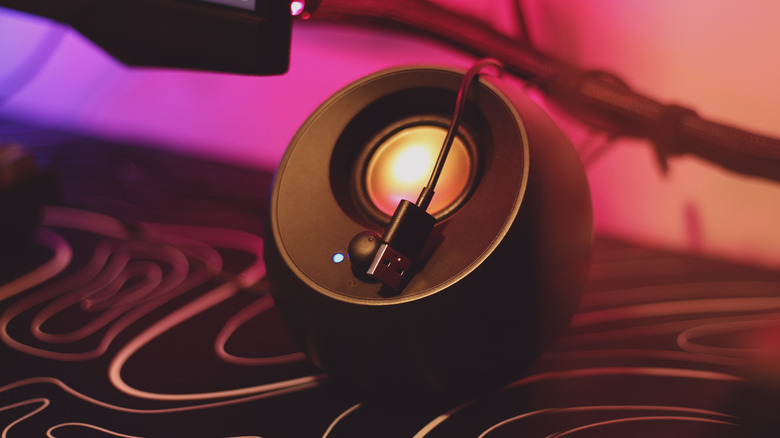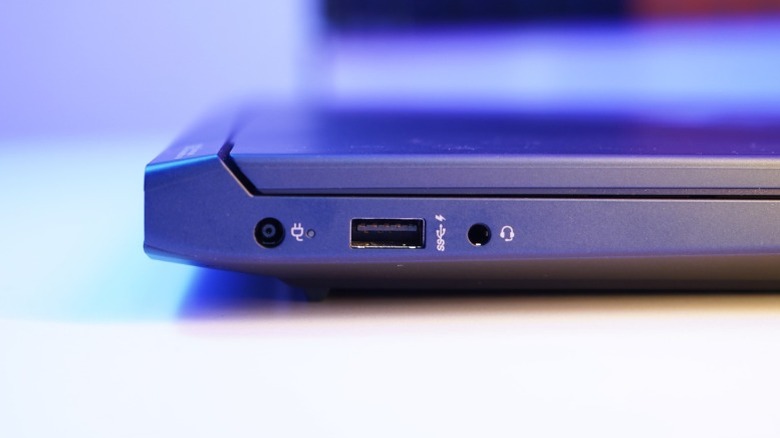Yes, USB Speakers Exist - Here's How They Work
We may receive a commission on purchases made from links.
The Universal Serial Bus (USB) standard has been around for years and is what has made it easy for users to connect peripherals and other devices to their computers. One of the more essential USB gadgets every PC user should know about is a good set of speakers. Desktop computers will require an audio output source anyway, but a pair of external speakers will add noticeable clarity and thump to the audio listening experience for laptop users as well.
Most laptops — even the ambitiously port-lacking MacBook — have a familiar 3.5mm headphone jack. Though there is a difference between USB headphones versus their 3.5mm counterparts, one is inarguably far more convenient. You may have already used, or at the very least, come across a pair of headphones that connect solely through a USB connection. This makes them compatible across a wider range of devices that might not necessarily have a dedicated audio jack. The same can be said for speakers that can not just play audio, but also be powered by the same USB connection.
The Creative Pebble V3 is a popular recommendation if you're looking for a compact set of external speakers for your laptop or desktop computer. They connect via USB and don't need a separate power source to function. I own a pair of them myself and can attest to how convenient it is to have a plug-and-play solution that just works.
USB vs. 3.5mm speakers
In order to understand how USB-powered speakers function, let's quickly glance over how traditional ones operate. Speakers or headphones that connect via a 3.5mm audio jack rely on the connected device's internal sound card to do the heavy lifting. Data is sent as analog signals that vibrate the speaker cone to produce sound. If you own a device with a high-quality sound card, then a pair of 3.5mm headphones or speakers can deliver exceptional audio quality. However, in most cases, the reverse holds true — and the sound output may be lackluster.
USB-powered speakers and headphones have a built-in digital-to-analog (DAC) converter. Your computer sends digital audio signals straight to the speaker, where the internal DAC then converts them into analog signals. This is then amplified and used to drive the speakers. A pair of USB headphones will not only bypass your computer's sound card entirely, but also make sure that the audio output remains consistent.
Other direct benefits of using USB speakers, apart from the ease of setup, include power efficiency and better cable management. Some higher-end options sport detachable cables, so you can swap them for a longer or shorter USB cable to better fit your setup. The "universal" bit in USB also helps when you realize you can plug a pair of USB headphones or speakers into most devices, including laptops, desktops, and even phones and handheld consoles with the right adapter.

